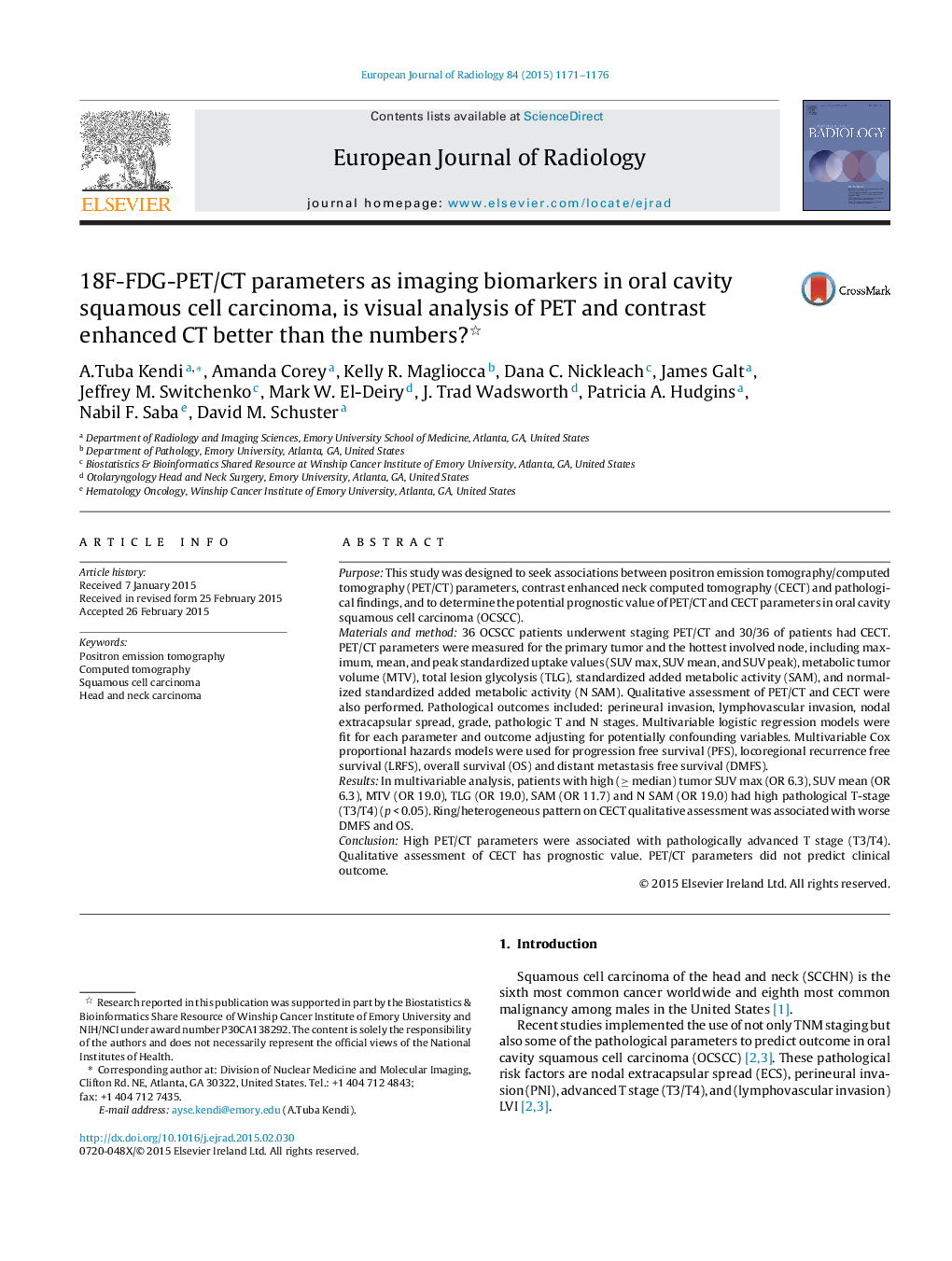| کد مقاله | کد نشریه | سال انتشار | مقاله انگلیسی | نسخه تمام متن |
|---|---|---|---|---|
| 4225118 | 1609753 | 2015 | 6 صفحه PDF | دانلود رایگان |

• Highlights of our study were the significant association of higher T stage of oral cavity squamous cell carcinoma with PET/CT parameters.
• This could be an important finding in cases where it is difficult to decide on T stage by CT only.
• We found a significant association between ring/heterogeneous enhancement pattern of (either primary or nodal or both) oral cavity squamous cell carcinoma at contrast enhanced CT and poor prognosis.
• This could be related to hypoxia, which is a known reason for therapy resistance. Hence therapies can be tailored in the feature depending on enhancement pattern on contrast enhanced CT.
PurposeThis study was designed to seek associations between positron emission tomography/computed tomography (PET/CT) parameters, contrast enhanced neck computed tomography (CECT) and pathological findings, and to determine the potential prognostic value of PET/CT and CECT parameters in oral cavity squamous cell carcinoma (OCSCC).Materials and method36 OCSCC patients underwent staging PET/CT and 30/36 of patients had CECT. PET/CT parameters were measured for the primary tumor and the hottest involved node, including maximum, mean, and peak standardized uptake values (SUV max, SUV mean, and SUV peak), metabolic tumor volume (MTV), total lesion glycolysis (TLG), standardized added metabolic activity (SAM), and normalized standardized added metabolic activity (N SAM). Qualitative assessment of PET/CT and CECT were also performed. Pathological outcomes included: perineural invasion, lymphovascular invasion, nodal extracapsular spread, grade, pathologic T and N stages. Multivariable logistic regression models were fit for each parameter and outcome adjusting for potentially confounding variables. Multivariable Cox proportional hazards models were used for progression free survival (PFS), locoregional recurrence free survival (LRFS), overall survival (OS) and distant metastasis free survival (DMFS).ResultsIn multivariable analysis, patients with high (≥ median) tumor SUV max (OR 6.3), SUV mean (OR 6.3), MTV (OR 19.0), TLG (OR 19.0), SAM (OR 11.7) and N SAM (OR 19.0) had high pathological T-stage (T3/T4) (p < 0.05). Ring/heterogeneous pattern on CECT qualitative assessment was associated with worse DMFS and OS.ConclusionHigh PET/CT parameters were associated with pathologically advanced T stage (T3/T4). Qualitative assessment of CECT has prognostic value. PET/CT parameters did not predict clinical outcome.
Journal: European Journal of Radiology - Volume 84, Issue 6, June 2015, Pages 1171–1176